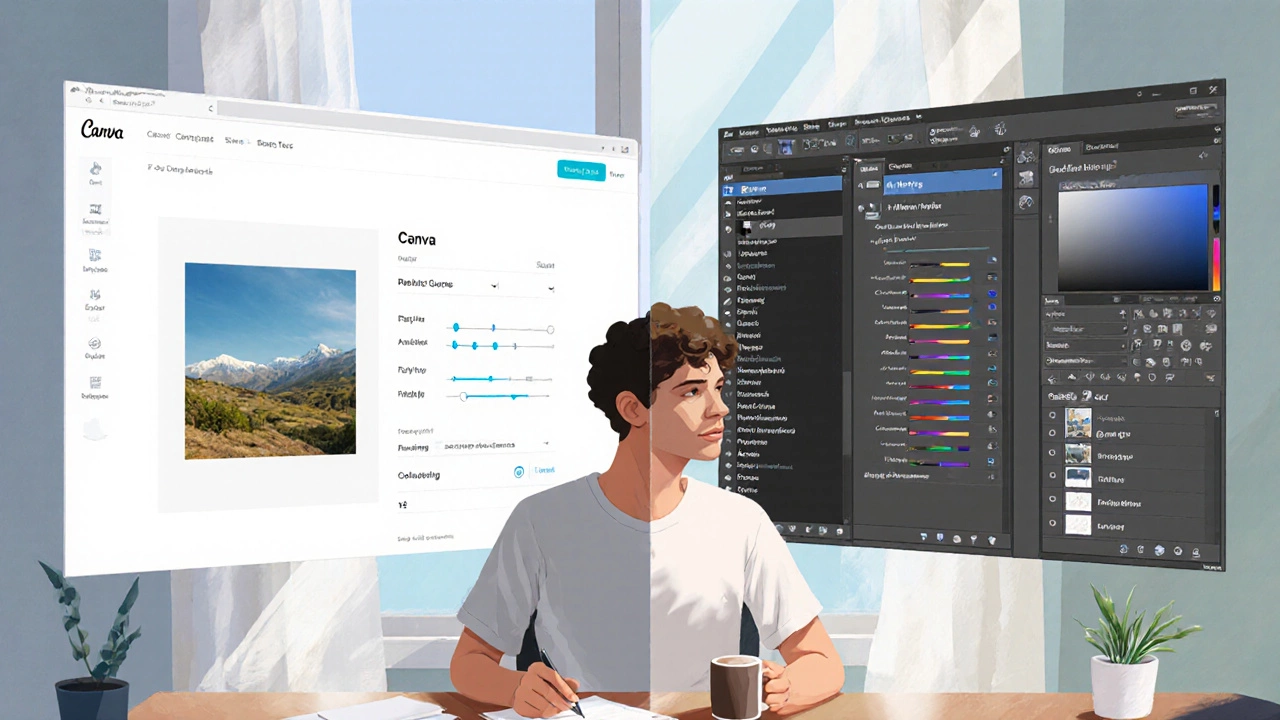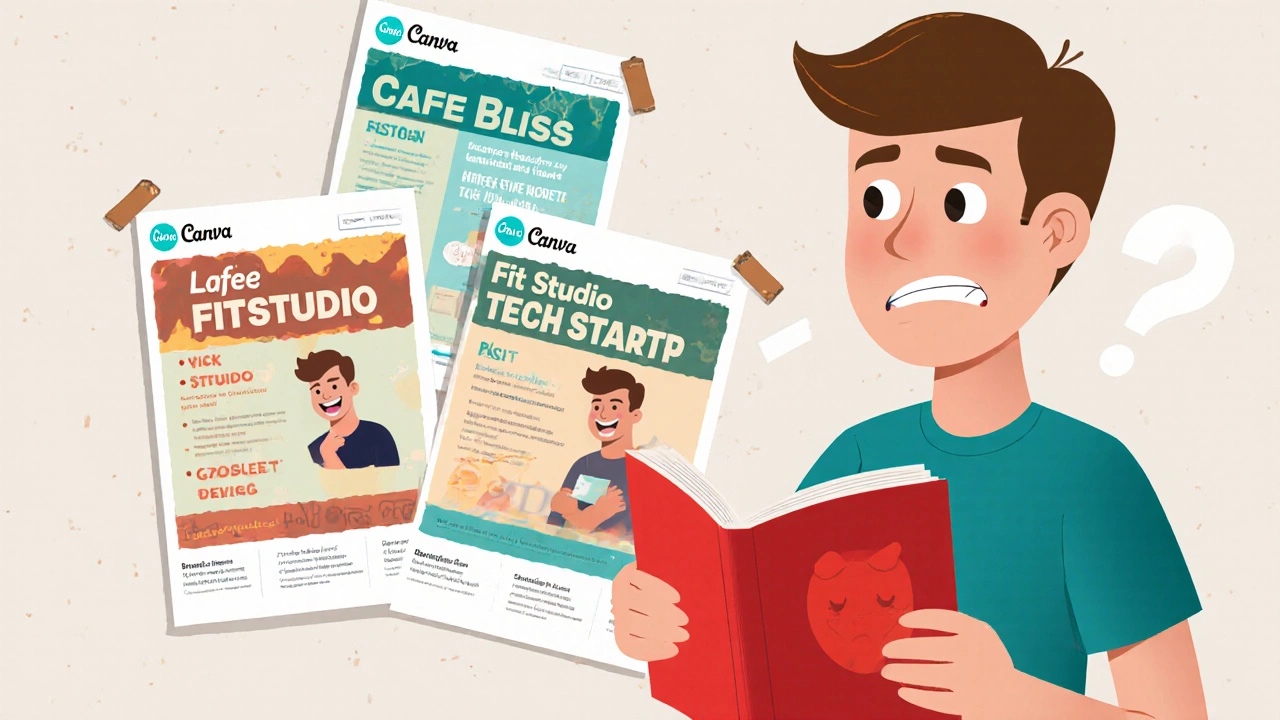Canva Disadvantages: What You Need to Know Before Using the Design Tool
 Oct, 15 2025
Oct, 15 2025
Canva Print Export Calculator
Check Your Print Requirements
Canva supports:
- Free version: 96 dpi (PNG/JPG)
- Pro version: 300 dpi (PDF)
- Only RGB color mode
Key Takeaways
- Canva’s ease of use comes at the cost of limited advanced editing features.
- Templates can lead to brand inconsistency if not customized carefully.
- Export options are restricted, especially for high‑resolution print work.
- The free tier has bandwidth caps and watermarks on premium assets.
- Collaboration is handy, but version control can become chaotic.
When it comes to quick graphics, Canva is a browser‑based design platform that lets anyone drag‑and‑drop templates, photos and icons to create social posts, flyers and more. It was launched in 2012 and now boasts over 80million users worldwide. Canva disadvantages often hide behind its friendly UI, and anyone planning a long‑term visual strategy should weigh them before committing.
1. Limited Advanced Editing Tools
Canva shines for simple layouts, but it stops short of the pixel‑perfect control you get in Adobe Photoshop. Photoshop’s layer styles, masking options, and adjustment layers let designers fine‑tune colors, lighting and textures. In Canva, you’re limited to preset filters and a handful of adjustment sliders. If you need to retouch a product photo, remove a background with precision, or apply complex blending modes, you’ll quickly run into a wall.
2. Template Over‑reliance and Brand Dilution
Canva’s massive library of pre‑made templates is a double‑edged sword. While they save time, many small businesses end up reusing the same designs you see on other sites. Without a robust brand‑style guide, the default fonts and color palettes can make your brand look generic. Unlike Figma, which lets teams create shared component libraries, Canva offers only basic brand kits that don’t enforce consistency across projects.
3. Export Restrictions and Print‑Ready Files
High‑resolution print work demands CMYK color, 300dpi, and vector formats such as EPS or PDF‑X. Canva’s free version only exports PNG or JPG at 96dpi, and even the Pro plan caps PDF downloads at 300dpi without CMYK support. Designers who need bleed marks, spot colors, or layered PDFs often have to export from Canva and then re‑open the file in Photoshop or Illustrator for final tweaks-adding extra steps and potential quality loss.

4. Asset Licensing and Hidden Costs
The platform ships with millions of stock photos, icons and illustrations. However, many premium assets are locked behind a pay‑per‑download model, even for Pro users. If you download a “free” image that later shows a watermark, you may need to purchase a separate license, which can surprise budgets. Moreover, the free tier imposes a monthly download limit (around 10GB), throttling heavy users.
5. Collaboration Chaos and Version Control
Canva’s real‑time collaboration feels like Google Docs, but there’s no built‑in version history beyond the most recent three saves. Teams frequently overwrite each other’s work, and there’s no clear audit trail. In contrast, tools like Figma maintain an infinite history and allow you to revert to any previous state.
6. No Offline Mode
Because Canva runs in a web browser, an internet connection is mandatory. If you’re traveling, in a coffee shop with spotty Wi‑Fi, or working on a client’s local network, you can’t open or edit existing designs. Adobe’s Adobe Photoshop and Adobe Illustrator both offer full offline functionality, letting creatives work anywhere.
7. Subscription Model vs. One‑Time Purchase
Canva’s revenue hinges on a monthly or yearly subscription. While the Pro plan unlocks more templates and storage, you’re locked into recurring payments. Some competitors, such as Crello (now VistaCreate), still offer a lifetime license for a single fee, which can be more economical for freelancers who prefer a one‑off cost.
Comparison at a Glance
| Feature | Canva (Pro) | Adobe Photoshop | Figma |
|---|---|---|---|
| Cost (annual) | $119.99 | $239.88 (Creative Cloud) | Free tier; $144/yr for Professional |
| Offline Editing | No | Yes | Yes (desktop app) |
| Advanced Photo Retouching | Basic filters only | Full suite (layers, masks, brushes) | Limited - vector focus |
| Export Formats | PNG, JPG, PDF (no CMYK) | PSD, TIFF, PDF, EPS, RAW | PNG, JPG, SVG, PDF |
| Version History | 3 recent saves | Unlimited (auto‑save) | Unlimited with revert |
| Brand Kit | Basic (fonts, colors, logos) | Custom libraries (CC Libraries) | Shared component libraries |
When Canva Might Still Be the Right Choice
If you’re a solo entrepreneur needing a quick Instagram post, a nonprofit creating flyers on a shoestring budget, or a teacher designing classroom handouts, Canva’s drag‑and‑drop simplicity outweighs the downsides. The platform’s built‑in stock library, easy text tools, and ready‑made social‑media dimensions let you publish in minutes.
How to Mitigate the Drawbacks
- Export your design as a PNG, then refine it in Photoshop for any print‑critical work.
- Develop a strict brand guide and replace default fonts and colors with your own assets.
- Use Canva’s “Folder” feature to organize assets and avoid version overlap.
- Purchase a Pro subscription only if you regularly need premium stock photos; otherwise stick to free resources.
- Consider a hybrid workflow: start with Canva for layout, then switch to a desktop tool for final polishing.
Frequently Asked Questions
Can I use Canva for commercial projects without a Pro account?
Yes, but you’ll be limited to free assets and a maximum of 10GB of monthly downloads. Some premium images will carry a watermark unless you purchase a separate license.
Is Canva’s color profile suitable for professional printing?
Canva exports only in RGB. For CMYK‑dependent print jobs you’ll need to convert the file in Photoshop or another professional app, which can shift colors.
How does Canva’s collaboration compare to Google Docs?
Collaboration is real‑time, but there’s no robust version history. Teams often resort to naming conventions or downloading copies to keep track of changes.
Can I work on Canva designs offline?
No. Canva is a cloud‑only service; you must be online to open or edit a design.
What are the best alternatives for a free, powerful design tool?
For vector work, Figma offers a generous free tier. For raster editing, GIMP provides Photoshop‑like features at zero cost.